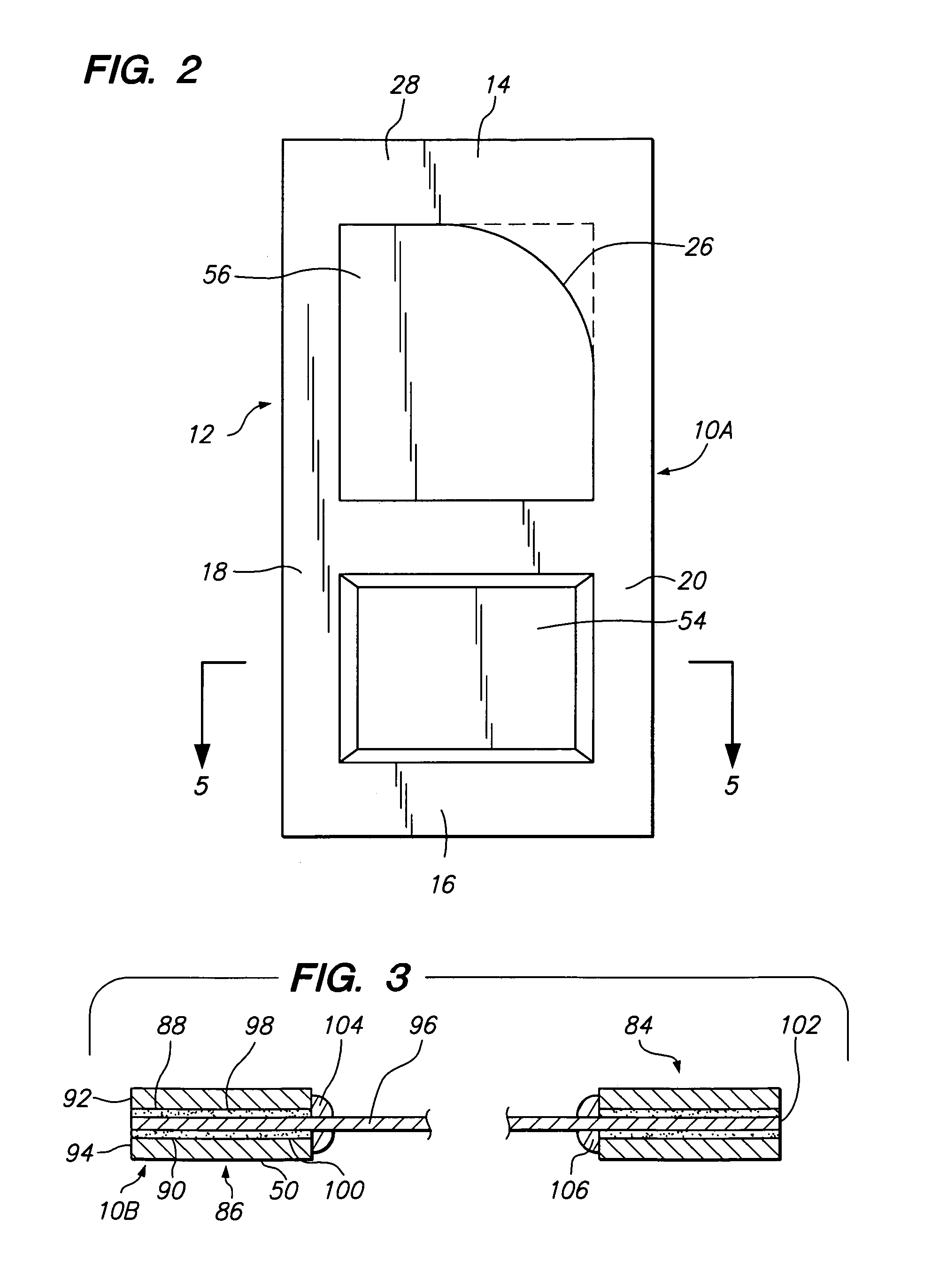Door structure
a door structure and door frame technology, applied in the field of door structure, can solve the problems that conventionally assembled wooden doors are not amenable to powder coating, and achieve the effects of reducing gaseous emissions of volatile components, shortening the manufacturing time, and facilitating the design of panels
- Summary
- Abstract
- Description
- Claims
- Application Information
AI Technical Summary
Benefits of technology
Problems solved by technology
Method used
Image
Examples
Embodiment Construction
[0042]Various aspects of the invention will evolve from the following detailed description of the preferred embodiments thereof which should be referenced to the prior delineated drawings.
[0043]The preferred embodiment of the invention as a whole is shown in the drawings by reference character 10 followed by an upper case letter to denote variations thereof. With reference to FIGS. 1 and 2, embodiment 10A of the panel door structure of the present invention is depicted. Structure 10A includes as one of its elements a first skin unit 12. First skin unit 12 possesses a top portion 14, first side portion 18, and second side portion 20. Apertures 22 and 24 extend through first skin unit 12. It should be noted that aperture 24 possesses a curved edge 26. In addition, first skin unit 12 includes first surface 28 and an opposite second surface 30, FIG. 5.
[0044]A second skin unit 32 is also provided having a top portion 34, bottom portion 36, first side portion 38, and second side portion 4...
PUM
 Login to View More
Login to View More Abstract
Description
Claims
Application Information
 Login to View More
Login to View More - R&D
- Intellectual Property
- Life Sciences
- Materials
- Tech Scout
- Unparalleled Data Quality
- Higher Quality Content
- 60% Fewer Hallucinations
Browse by: Latest US Patents, China's latest patents, Technical Efficacy Thesaurus, Application Domain, Technology Topic, Popular Technical Reports.
© 2025 PatSnap. All rights reserved.Legal|Privacy policy|Modern Slavery Act Transparency Statement|Sitemap|About US| Contact US: help@patsnap.com



